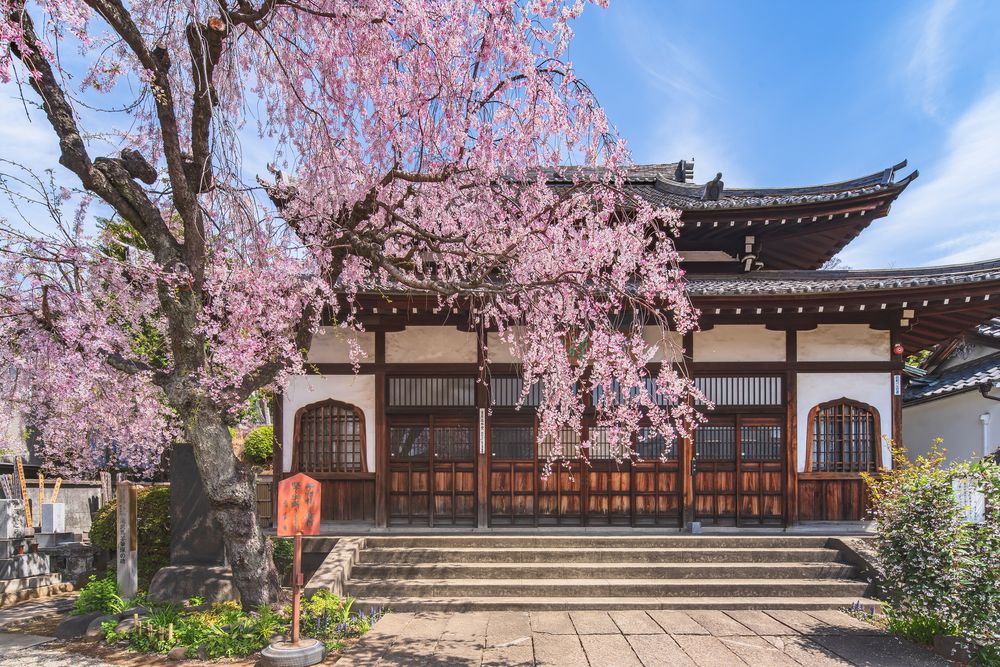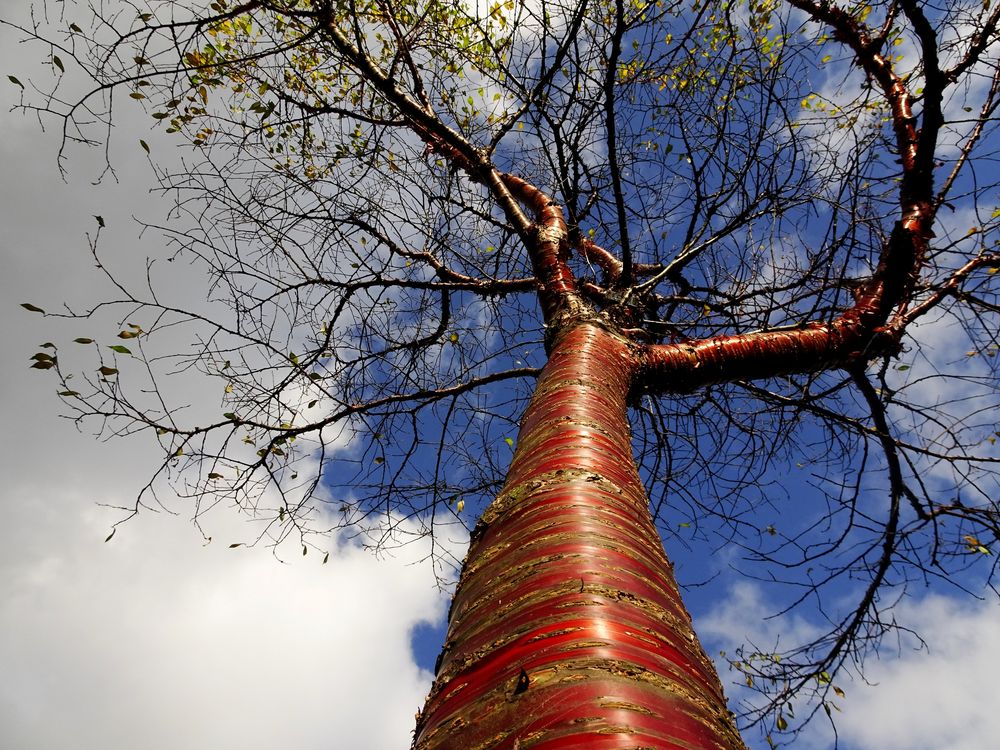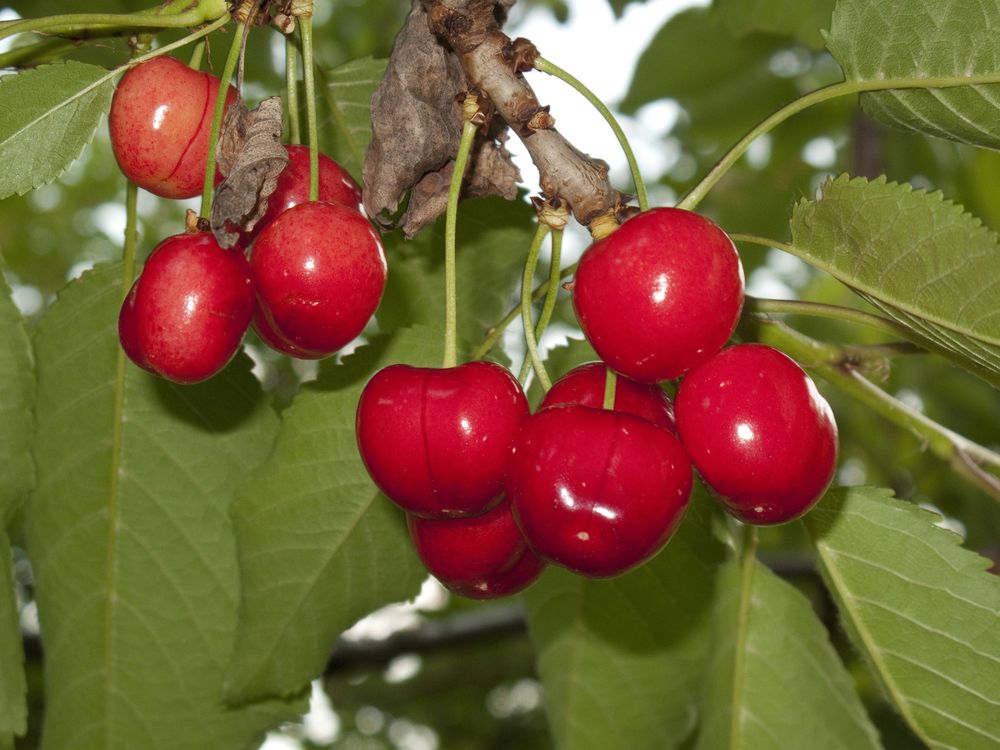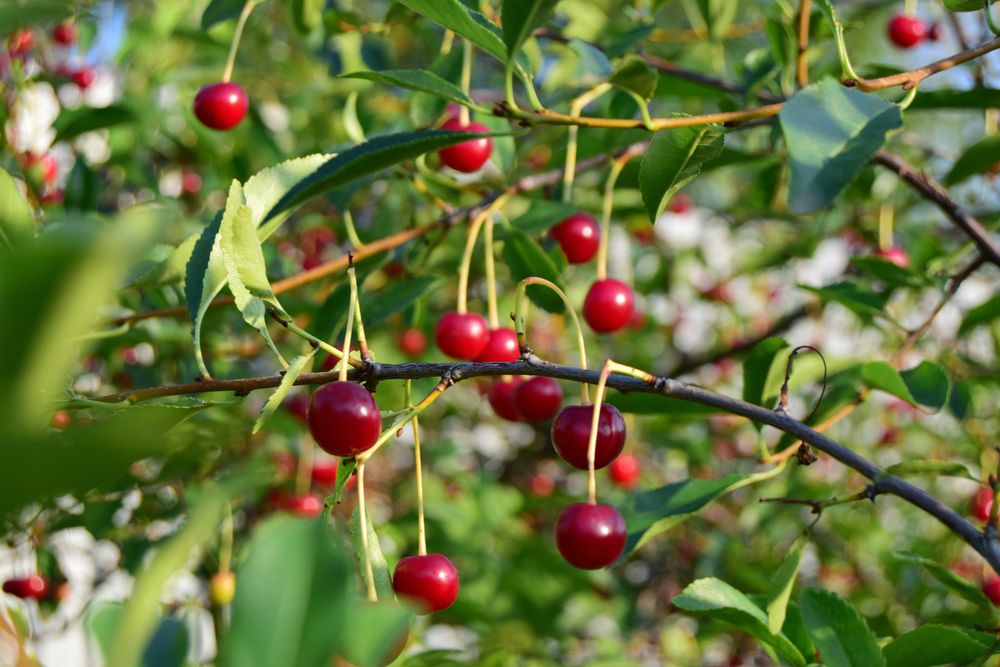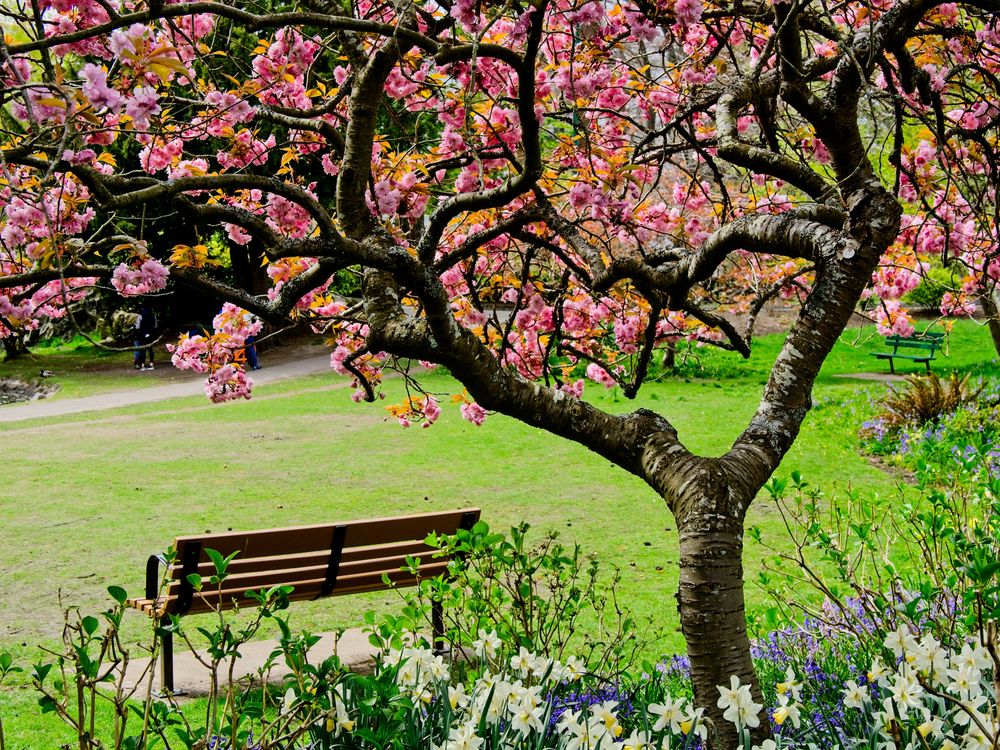Cherry Tree Varieties For Any Garden And Landscape
Fewer trees have achieved the cult status of the sweet cherry tree. Even the ubiquitous apple with all its varieties and cultivars doesn’t command the same respect as the cherry tree. To plant a cherry in your garden makes you a member of an exclusive club of gardeners.
Apart from the prestige and the delicious cherries, the tree also offers delightful colors throughout the year. Between the green foliage and white and pink blooms, your garden takes on a new life three seasons out of four every year.
And with so many varieties to choose from, you can turn your backyard into a cherry orchard with little effort. So which varieties can you grow in your garden? Read on to learn about the most popular cherry tree varieties and how to grow them.
Sweet Cherry Tree
For all of its ornamental value, the main reason people grow cherry trees is for the sweet and juicy cherries. The sweet cherry tree is the most popular of all cherries. Named after the extra sweetness of its fruits, the tree will grow to about 18 feet with some cultivars growing to about 35 feet at times.
The leaves start as green in the spring but turn bronze in the fall. This gives the tree a glowing canopy in the fall sun before the leaves finally fall before the winter. As for the flowers, they’re usually white with a strong fragrance that attracts pollinators from everywhere. The blooms open early in the spring and by the late spring, the cherries start covering the length of the branches and twigs.
Some sweet cherry cultivars to grow for their high yield include Stella and Black Tartarian. The ripe cherries vary in color from deep red to dark red or almost black. If you’re worried about pollination or only want to plant one cherry tree, then Lapins is a good choice. This cultivar is a self-pollinating tree with a good harvest.
That said, all varieties and cultivars of the sweet cherry thrive in full sun and loamy and fertile soil. Most varieties start flowering and bearing fruits by the third or fourth year at most. As for the chill hours, most varieties would need between 800 to 120 chill hours in the winter.
Vandalay Cherry Tree
This cultivar is a crossbreed between Stella and Van varieties. First developed in Toronto, Canada in the late nineties, it’s a relatively newcomer to the cherry scene. The fruits look like kidneys with dark red skin and wine-colored flesh. As for the taste, it’s extremely juicy, sweet, and aromatic. This is the kind of cherry you’d want to eat fresh off the tree. Of course, you can still make jams, smoothies, and fruit salads out of it. But the cherry loses much of its taste and flavor when processed or cooked compared to eating it fresh.
The Vandalay tree has the same requirements as most other cherry varieties. Choose a sunny spot that gets about 8 hours of full sun during the spring and summer. Make sure the soil is loose and rich. You can amend it with perlite and add plenty of organic materials. As for watering, the young tree needs between one to one and a half inches of water per week not counting the rainfall. By the third year, you can cut back to one inch of water a week during the growing season. It grows best in zones 5 to 9 and produces more crops if you plant another cherry tree within a 50-foot radius. Cross-pollination guarantees a higher yield than if you plant a single tree alone.
Benton Cherry Tree
Cherry trees are prone to many diseases and fungal infections that damage the crop and reduce its quality. However, Benton is a disease-resistant variety and you will have your harvest in full every year. Not to mention that the dark red cherries are a delight both in looks and taste.
Benton is a cultivar that was developed at Washington University by crossbreeding Beaulieu and Stella varieties. That might explain the high resistance to diseases and infections this cultivar is known for. It’s also why this cultivar is one of the earliest cherries to mature and is ready to harvest. What it gets from the Stella parent is the sweetness and delicate flavors.
The Benton tree grows upright with a slender trunk and a rather small canopy. The leaves are long and slim like little lances. As for the cherries, they’re bright red. The skin is smooth and the flesh is pinkish-red as well.
You can also increase the crop by planting more than one Benton cherry tree in close proximity to cross-pollinate each other. If you choose to grow different varieties, choose a cultivar that blooms around the same time as the Benton tree.
Black Tartarian Cherry Tree
If you grow the Black Tartarian cherry, you’ll need to wait a few years before you can tell why it was called that. For the first 3 to 4 years, the tree looks just like any other cherry tree. With lush green leaves and not a trace of black shade on the trunk or branches.
Then in the third year, the flowers will emerge for the first time. But these are pure white flowers without a single blemish or even gray shade. But when the cherries finally ripen, then you’ll understand. The dark red skin looks almost black.
The Black Tartarian is a native to Russia but it adapted well to US and British soil when it was first introduced in the early 18th century. As one of the oldest species to invade American soil, it has a wide fanbase. The fruit looks like a heart and due to its unusual color, the tree was dubbed the Large Black Heart.
Another reason for the popularity of this variety is the high yield it produces every year. One tree can keep a household of 4 fully stocked on cherries the whole year. The tree grows well in loamy soil but can handle other types as well. It also has a high tolerance for drought than many other cherry trees.
Tibetan Cherry Tree
This cherry combines decorative values and exquisitely sweet cherries in one tree. Once the tree has reached maturity, the trunk turns bright copper that shimmers in the sunlight. This contrasts with the lush green leaves which add vivid colors to the garden in the spring and summer.
But once the flowers bloom, you can forget about the colors and focus on the fragrance. Like many cherry varieties, the blooms have an intoxicating scent that does a good job attracting bees and butterflies to the garden.
The Tibetan cherry is a small and compact tree with some varieties that grow as shrubs. This allows you to grow it in the garden or in a container. As a potted plant, you can move the tree and protect it against severe weather.
However, this tree is not easy to grow since the seeds are quite rare. Outside of its native habitat in Tibet, the tree is rarely seen.
Van Cherry Tree
This is the same variety that was used to produce the Vandalay cultivar. They are best known for their high productivity and disease-resistant qualities. As for the taste and flavors of the cherries, they’re not the sweetest or tastiest cherries you can grow. Although you can still eat them raw, they make better desserts, cakes, sorbets, and juices.
Start the tree from seeds or transplant a sapling either in the spring or the fall. If you plant it in the spring, wait until the threat of the last frost is over and if you plant it in the fall, allow it a few weeks before the first frost. The tree can handle cold temperatures but it needs time to adjust and grow stronger first. Choose a sunny spot with fertile soil for the tree. You’ll need to have more than one cherry tree growing about 30 feet apart for cross-pollination.
The Van is the favorite cherry among commercial growers. It keeps producing a steady crop year after year and doesn’t succumb to cherry diseases easily.
Lapins Cherry Tree
This is another cultivar that is the product of Stella and Van. The cherries are round, small, and extra sweet. On average the ripe cherry measures about one inch in diameter but is packed with flavors and sugar content. Another quality that endears this cherry to gardeners is that the flesh is usually firm even when fully ripe. It stays fresh in the fridge for longer periods of time than other cherries and doesn’t lose its flavors quickly.
You can grow it in zones 5 to 9 without any issues. Just make sure the tree gets between 800 to 900 chill hours every winter in order to have a good harvest. The blooms open early before the leaves have emerged in the early spring. By mid-summer, the cherries turn red and are ready to harvest.
The tree needs about 8 hours of sunlight a day during the spring and summer. The soil should be loose and rich. Amend clay or sandy soil to make it as close to loamy soil as possible. Mix in plenty of aged manure before you plant the tree to give it a good start. Avoid chemical fertilizers and side-dress with organic compost instead. Water requirements are average for cherry trees. About one inch of water a week is all the tree needs until the fruits ripen.
Japanese Cherry Tree
If you have ever watched a Japanese movie, you would have undoubtedly noticed Japanese cherry trees dotting the landscape. It doesn’t matter if it’s a rural scene or in the heart of the city. The cherry tree has a sacred place in Japanese culture. This is why you’ll find it growing in temples and its wood is used to decorate the inner sanctums of many Japanese holy places.
There’s no surprise there. Once it blooms, the Japanese cherry becomes a globe of pinkish color and the most delicate scent. A single cherry tree can transform a drab garden and add much-needed colors and fragrance to the setting.
However, you can plant more than one tree and enjoy a vivid tableau of pink, violet, and white blooms in the spring. This also helps with cross-pollination and improves the productivity of each tree. As for the leaves, they start as light green in the late spring, long after the flowers have opened. In the fall, the leaves turn red, orange, and brown giving the tree a fiery appearance in the afternoon sun.
The Japanese cherry needs more water than other cherries. You’ll need to keep the soil moist throughout the spring and summer. A thick layer of mulch can help with water retention and keep weeds and insects from the tree. Feed the tree with copious amounts of aged manure and organic compost from the early spring until the fruits change color.
